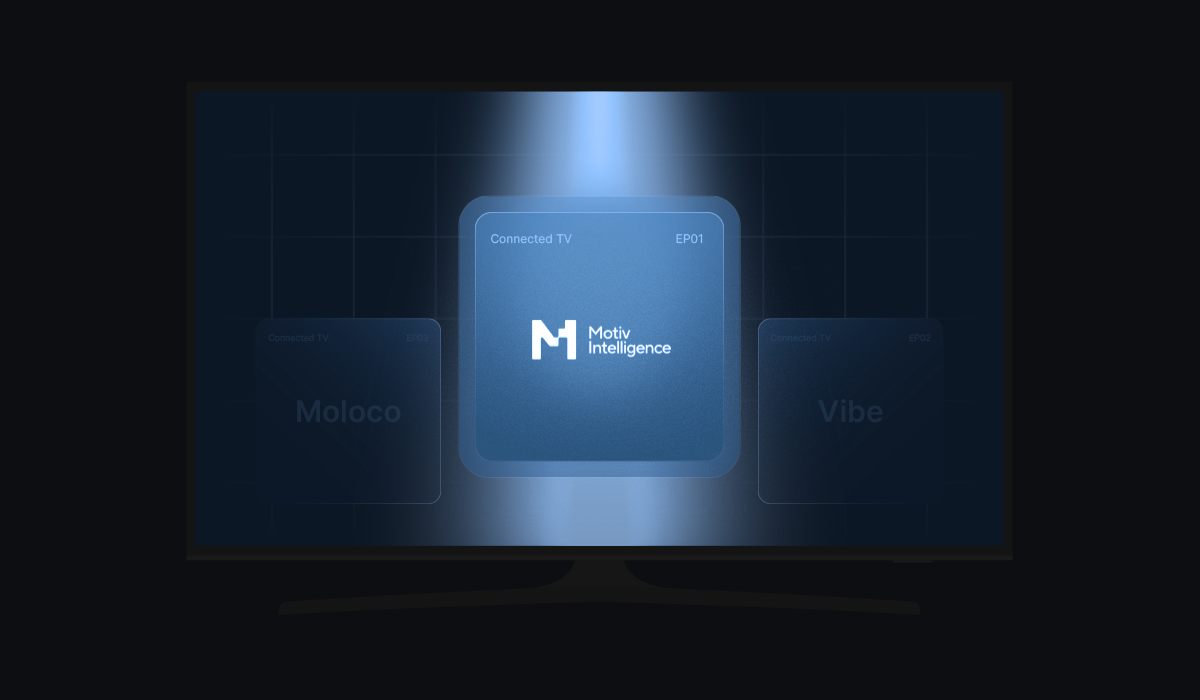Motiv Intelligence on Turning CTV into a Performance Channel for Mobile Marketers


Motiv Intelligence on Turning CTV into a Performance Channel for Mobile Marketers
User acquisition UA is always top of mind for mobile app marketers. In today’s hyper-competitive market, finding channels that consistently deliver measurable performance isn’t easy.
That’s why CTV advertising is gaining traction as a scalable opportunity for UA. Yet many marketers still lack clarity on the role CTV can play in their acquisition strategy.
To answer those questions, Airbridge launched a dedicated interview series spotlighting the fast-evolving world of CTV advertising. For our first edition, we sat down with Motiv Intelligence, a leading player in user behavior data and cross-media targeting.
Read on for Motiv Intelligence’s take on what CTV really means, why it matters, and how marketers can make it work.
TV has always been one of the most strategic advertising channels. As the biggest screen in the household, it commands attention and trust through its size and premium audio-visual experience. Beyond its standalone impact, research from MediaCom shows TV also amplifies the effectiveness of other channels, making it a powerful booster in the overall media mix.
That said, traditional TV advertising has long been a tough fit for performance marketers. With high CPMs, rigid buying models, and limited flexibility, TV often fell short compared to digital. And without data-driven targeting, measurement, or optimization, it simply didn’t meet the needs of app marketers who live and breathe attribution.
CTV changes the equation. Because it’s internet-connected, CTV advertising combines the reach and authority of TV with the precision of digital. Marketers can now buy impressions programmatically at CPM, target audiences in real time, and track performance with the same rigor as other digital campaigns. It’s no surprise that app marketers are already embracing CTV as a core UA channel.
The ecosystem is ready. Mobile app marketers can now activate data-driven CTV campaigns, attribute results through an MMP like Airbridge, and continuously optimize toward performance goals. For UA teams exploring new growth channels, CTV deserves a spot at the top of the list.

Because CTV offers targeting and measurement capabilities on par with digital, advertiser adoption is growing fast. We’re seeing strong adoption from verticals such as beverages, automotive, consumer electronics, fashion, and QSR. On the app side, examples range from location-based community apps to mobile games, rewards apps, and luxury shopping apps. In fact, 63% of campaigns we ran in 2024 continued for more than two months, clear proof of high satisfaction among advertisers.
Motiv Intelligence’s CTV solution supports both brand lift and performance outcomes, leveraging MMP integrations for mobile apps, CTS for web tracking, and DMP-driven data collection and analysis. This gives marketers a full picture, from awareness through to conversions.
While CTV operates in the digital realm, it works differently from mobile advertising. Because users can’t click directly on a TV screen, marketers need expertise in mapping exposure data to in-app actions, a skill set distinct from traditional mobile UA. Effective campaigns also require deeper audience segmentation, often starting with DMP data extraction and analysis at the planning stage.
Motiv Intelligence runs both as a CTV ad platform and a mobile ad platform, enabling true cross-device campaigns. By bridging TV and mobile, they help marketers deliver more holistic and impactful results.
For some app marketers, CTV can feel unfamiliar. That’s why their team offers tailored consulting backed by hands-on experience in cross-device advertising and data-driven optimization, ensuring every campaign aligns with the marketer’s UA objectives and measurement framework.
At the core of Motiv Intelligence’s CTV platform is a patented mobile–TV matching technology, one among the very first of its kind. Combined with one of the largest CTV ad inventories, this allows app marketers to run precise audience-level targeting based on mobile behavior histories. Their platform is also integrated with leading MMPs, including Airbridge, which means that even though ads are delivered on TV, they can be tracked like mobile ads. Postbacks enable real-time measurement and optimization, giving marketers full transparency into performance.
Marketers can target users acquired through previous UA campaigns, or re-engage churned users, by delivering ads on TV and measuring results with MMP data.
They also integrate with six different DMPs, one of the broadest ranges available. This gives advertisers the flexibility to build custom audience segments, whether it’s competitive app users during a launch, shoppers with purchase histories, or audiences defined by specific location visits, and activate them directly on TV.
A location-based community app measured with an MMP saw its in-app purchase conversion rate reach 116% compared to mobile-only campaigns. An outdoor brand using CTS achieved a return on ad spend (ROAS) uplift of roughly 450%. And a coffee beverage brand leveraging DMP data analysis recorded a 315% lift in ad contribution. For more details, marketers can check out their CrossTarget TV product guide available on their website.
Mobile and gaming marketers know how central mobile advertising has been to UA. But every stage of the marketing funnel matters, and performance at each stage influences not only the next step but also long-term retention. That’s why marketers need to engage consumers across their entire media journey with precise, well-placed messaging.
Meanwhile, privacy regulations and rising CPMs are squeezing performance efficiency in mobile channels. Marketers are looking at MMM (Media Mix Modeling) as a solution, but most MMM frameworks have been mobile-first, thus failing to capture the full complexity of today’s cross-device media behavior.
With CTV, that gap closes. Data-driven targeting, digital-level measurement, and performance optimization are now possible on TV, making it easier to integrate CTV into MMM models. For marketers focused on consumer-centric strategies, the question becomes: how can you capture and maximize the “watch time” audiences are spending on CTV to drive brand awareness and long-term growth?
Want to hear directly from the teams shaping the future of CTV advertising? Check out the full interview series below for insider perspectives and proven strategies.
👉 Vibe.co


